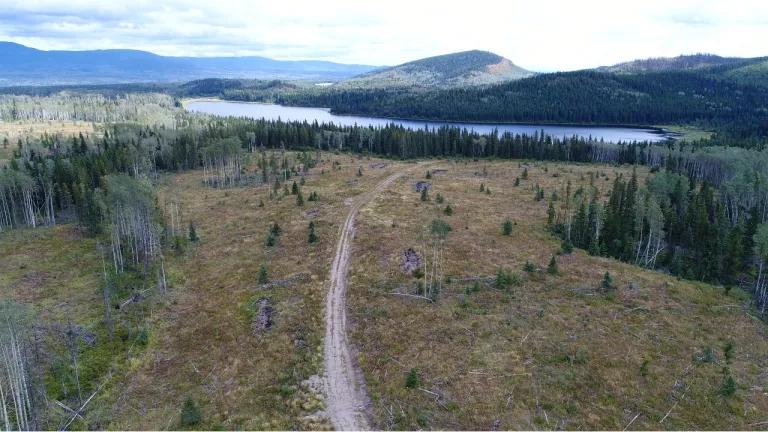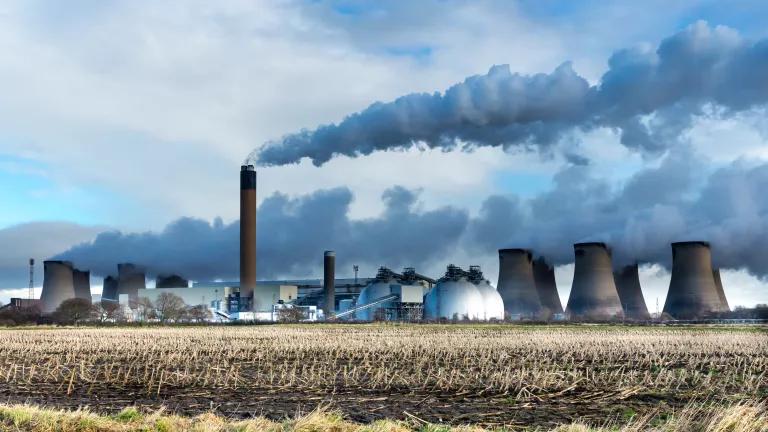New Report Recognizes Some Risks of Bioenergy, Misses Others
The true test of the IPCC’s thoughts on bioenergy will be its report – expected to be released in April – on how the world should cut emissions.

Pinnacle/Drax logging for biomass near Topley, British Columbia
(C) Conservation North/Kai Nagata
A new report by the Intergovernmental Panel on Climate Change (IPCC) recognizes some impacts of bioenergy it hadn’t noted before, while continuing to ignore others.
The report, which governments have signed off on, acknowledges the risks of bioenergy to biodiversity and water and food security in the following ways:
- Underscores that bioenergy and bioenergy with carbon capture and storage (BECCS) can negatively impact biodiversity - Because bioenergy relies on cutting down trees to convert into wood pellets, it impacts global biodiversity in a big way in the midst of a biodiversity crisis. The IPCC report begins to grasp these impacts, stating that “of the most serious emerging conflicts [between climate mitigation and biodiversity] are between land-based approaches to mitigation and the protection of biodiversity, particularly as a result of afforestation strategies and potentially large areas devoted to bioenergy, including bioenergy with carbon capture and storage (BECCS).” In other words, taking up huge areas of land to grow bioenergy crops will harm ecosystems and the wildlife that depends on them. The authors also note that “if bioenergy were a major component of climate change mitigation strategies,” it would likely have “severe impacts on species.”
- States that growing bioenergy crops over large areas will risk food production, with potentially severe global equity impacts - Increasing bioenergy reliance – as many countries including the UK hope to do – will require dedicating much more land to growing bioenergy crops. This conflicts with the need for land for food production. The IPCC recognizes this, stating that, “BECCS… can significantly impact food prices via demand for land and water,” “severely affect[ing]” “vulnerable people in the Global South” most of all. The report also notes that "[a] growing list of studies have documented the detrimental trade-offs between small-holder food systems and large-scale biofuel production, which include dispossession and impoverishment of small-holder farmers, food insecurity, food shortages, and social instability."
- Notes that growing bioenergy crops over large areas will significantly increase water stress - The report also finds that irrigating large areas of bioenergy crops needed to increase bioenergy will significantly increase water stress, “doubl[ing] the global area and population living under severe water stress.” As the report states, BECCS “has profound implications for water resources.”
These are important points for the IPCC to acknowledge – and ones they have not previously recognized – demonstrating a growing awareness around the detrimental impacts of biomass.
Unfortunately, the report misses an opportunity to underscore that the bulk of scientific evidence raises serious concerns about bioenergy’s climate impacts, and instead insists that the jury is still out. In markets like the UK, genuinely renewable and non-emitting energy sources like solar and wind are readily available and guarantee emissions reductions at a fraction of the cost of biomass electricity. These are the solutions we should be pursuing in earnest, not high-risk pathways dependent on burning trees for energy.
The true test of the IPCC’s thoughts on bioenergy will be its report – expected to be released in April – on how the world should cut emissions. Given the enormous risks to people and planet that the IPCC now rightly highlights, large scale reliance on bioenergy and BECCS must not be codified as cornerstones of delivering on ‘net zero’ emissions targets.
Bioenergy and BECCS are wolves in sheep’s clothing - they’re painted as climate solutions but, at the scale the IPCC has previously predicted we should deploy them, could prove the undoing of nature, the climate, and food production.



